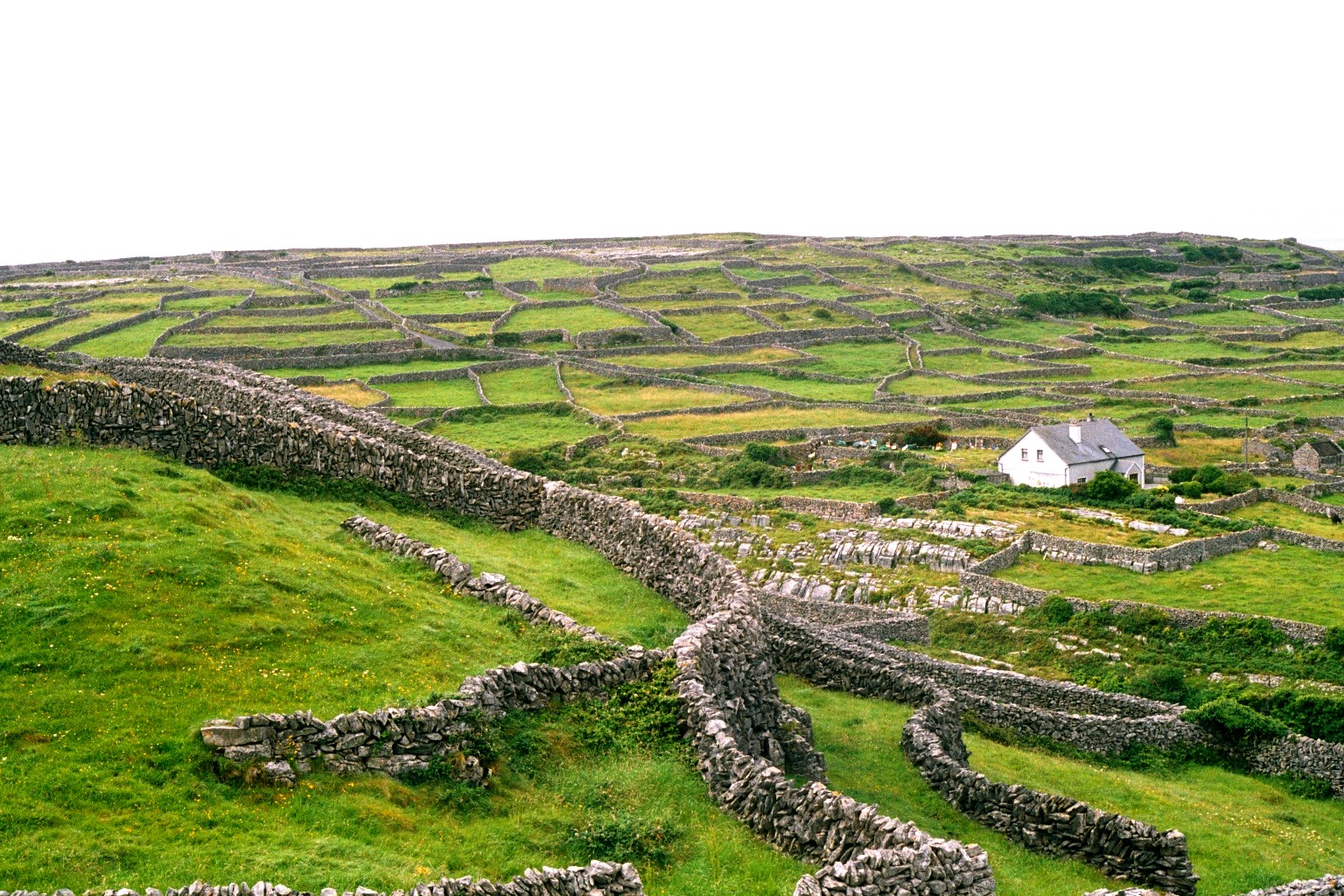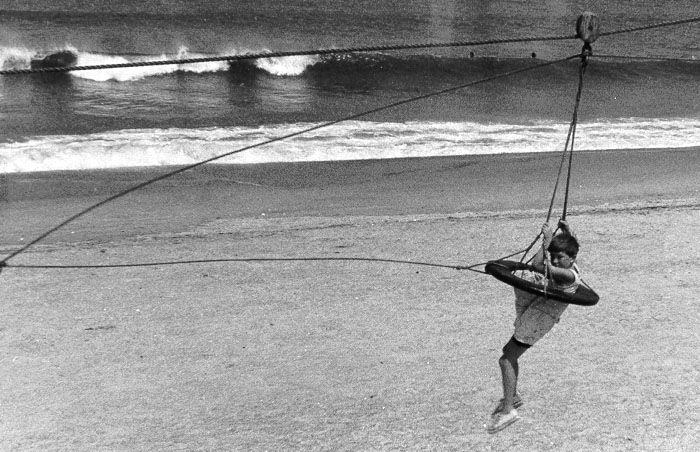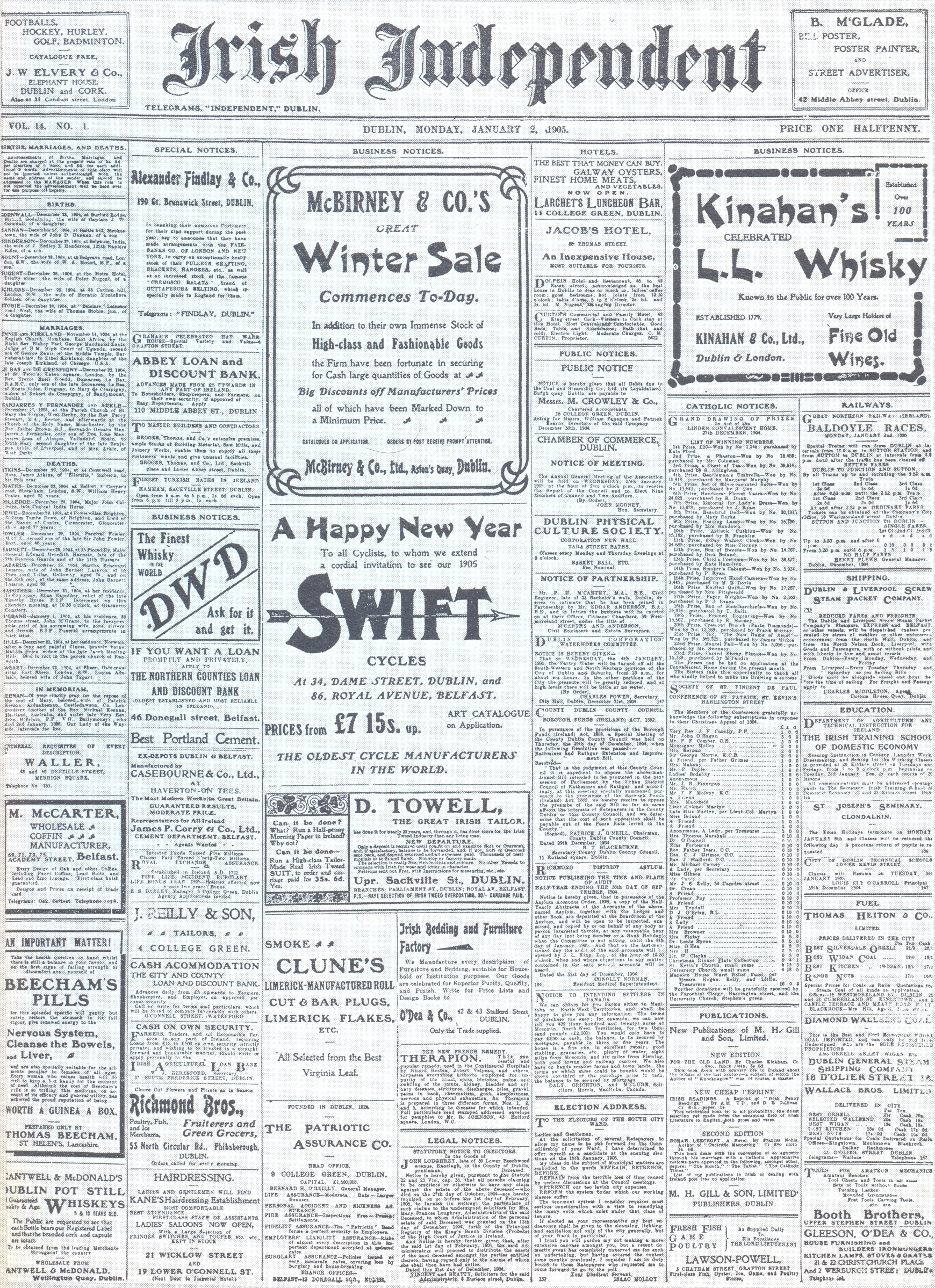|
Inisheer Rocket Crew
The Inisheer Rocket Crew were a group of men trained in maritime rescue, on Inisheer, one of the Aran Islands, County Galway off the coast of Ireland. The was driven onto the rocks near Inisheer after heavy storms in 1960. Its crew of 11 men were trapped on the ship. The Rocket Crew rescued the entire crew from the stricken vessel using a breeches buoy A breeches buoy is a rope-based rescue device used to extract people from wrecked vessels, or to transfer people from one place to another in situations of danger. The device resembles a round emergency personal flotation device with a leg harn .... The breeches buoy had been in existence on the island since 1901, but had never been used prior to this. The Rocket Crew had only enough fuel to launch three rockets, and stood up in their necks in the water to rescue the crew. The Rocket Crew consisted of Coleman Conneely, Andrew Conneely, Martin Conneely, Patrick Conneely x2,Liam Conneely, Joseph Conneely, Anne Conneely, Marti ... [...More Info...] [...Related Items...] OR: [Wikipedia] [Google] [Baidu] |
Inisheer
Inisheer ( ga, Inis Oírr , or ) is the smallest and most easterly of the three Aran Islands in Galway Bay, Republic of Ireland, Ireland. With 281 residents as of the 2016 census, it is second-most populous of the Arans. Caomhán of Inisheer, Caomhán of Inis Oírr is the island's patron saint. There are five small settlements: Baile Thiar, Chapeltown (Baile an tSéipéil), Castle Village (Baile an Chaisleáin), Baile an Fhormna and Baile an Lorgain. Name The island was originally called ''Árainn Airthir'', and later ''Inis Oirthir'', which are thought to mean "eastern Aran" and "eastern island" respectively. (see scanned records) The second element is also found in the names Inishsirrer and Orior Lower, Orior. According to Séamas Ó Murchú, the current official name, , was brought into use by the Ordnance Survey Ireland. He says it may be a compromise between and the traditional local name . Geology and geography The island is geologically an extension of The Burre ... [...More Info...] [...Related Items...] OR: [Wikipedia] [Google] [Baidu] |
Aran Islands
The Aran Islands ( ; gle, Oileáin Árann, ) or The Arans (''na hÁrainneacha'' ) are a group of three islands at the mouth of Galway Bay, off the west coast of Republic of Ireland, Ireland, with a total area around . They constitute the historic barony (Ireland), barony of Aran in County Galway. From west to east, the islands are: Inishmore (''Árainn'' / ''Inis Mór''), which is the largest; Inishmaan (''Inis Meáin''), the second-largest; and Inisheer (''Inis Oírr''), the smallest. There are also several islets. The population of 1,226 (as of 2016) primarily speak Irish language, Irish, the language of local placenames, making the islands a part of the Gaeltacht. Most islanders are also fluent or proficient in Hiberno-English, English. The population has steadily declined from around 3,500 in 1841. Location and access The approaches to the bay between the Aran Islands and the mainland are: * North Sound''An Súnda ó Thuaidh'' (more accurately ''Bealach Locha Lurgan'') l ... [...More Info...] [...Related Items...] OR: [Wikipedia] [Google] [Baidu] |
County Galway
"Righteousness and Justice" , anthem = () , image_map = Island of Ireland location map Galway.svg , map_caption = Location in Ireland , area_footnotes = , area_total_km2 = 6151 , area_rank = 2nd , seat_type = County town , seat = Galway , population_total = 276451 , population_density_km2 = auto , population_rank = 5th , population_as_of = 2022 , population_footnotes = , leader_title = Local authorities , leader_name = County Council and City Council , leader_title2 = Dáil constituency , leader_name2 = , leader_title3 = EP constituency , leader_name3 = Midlands–North-West , subdivision_type = Country , subdivision_name = Ireland , subdivision_type1 = Province , subdivision_name1 = Connacht , subdivision ... [...More Info...] [...Related Items...] OR: [Wikipedia] [Google] [Baidu] |
Breeches Buoy
A breeches buoy is a rope-based rescue device used to extract people from wrecked vessels, or to transfer people from one place to another in situations of danger. The device resembles a round emergency personal flotation device with a leg harness attached. It is similar to a zip line. The breeches buoy may be deployed from shore to ship, ship to ship, or ship to shore using a Manby mortar, rocket, kite system, or a Lyle gun, and allowed evacuations of one person at a time. A line is attached to the ship, and the person being rescued is pulled to shore in the breeches buoy. History An early rescue using the equipment took place in 1866. The correspondent of the Scotsman, wrote :— Described as the first use of the apparatus, a re-enactment took place 150 years later. Eventually the Manby mortar was replaced by rockets to shoot lines to ships in distress. In 1967 a documentary on the inventor George Manby was made. Locations included Denver, Downham Market and Great Y ... [...More Info...] [...Related Items...] OR: [Wikipedia] [Google] [Baidu] |
National Maritime Museum Of Ireland
The National Maritime Museum of Ireland ( ga, Músaem Mhuirí Náisiúnta na hÉireann) opened in 1978 in the former Mariners' Church in Moran Park, located between the seafront and the centre of Dún Laoghaire town, southeast of Dublin city. President Michael D. Higgins officially re-opened the museum in 2012. History The church was built in 1837 for seafarers and remained open until 1971. In 1974 the Church of Ireland and the Maritime Institute of Ireland signed an agreement that led to the museum's opening. In 2006 substantial funding was authorised by the Government for capital expenditure to cover the cost of the refurbishment, however this funding has since ceased, and the museum is now dependent upon door receipts, fund raising events and donations. It is operated by volunteers and a community employment scheme provided by the Department of Social Protection. In July 2011 two stained-glass windows by artist Peadar Lamb were installed in the former church, sponsored by ... [...More Info...] [...Related Items...] OR: [Wikipedia] [Google] [Baidu] |
Dún Laoghaire
Dún Laoghaire ( , ) is a suburban coastal town in Dublin in Ireland. It is the administrative centre of Dún Laoghaire–Rathdown. The town was built following the 1816 legislation that allowed the building of a major port to serve Dublin. It was known as Dunleary until it was renamed Kingstown in honour of King George IV's 1821 visit, and in 1920 was given its present name, the original Irish form of Dunleary. Over time, the town became a residential location, a seaside resort and the terminus of Ireland's first railway. Toponymy The town's name means "fort of Laoghaire". This refers to Lóegaire mac Néill (modern spelling: Laoghaire Mac Néill), a 5th century High King of Ireland, who chose the site as a sea base from which to carry out raids on Britain and Gaul. Traces of fortifications from that time have been found on the coast, and some of the stone is kept in the Maritime Museum. The name is officially spelt Dún Laoghaire in modern Irish orthography; sometime ... [...More Info...] [...Related Items...] OR: [Wikipedia] [Google] [Baidu] |
Irish Independent
The ''Irish Independent'' is an Irish daily newspaper and online publication which is owned by Independent News & Media (INM), a subsidiary of Mediahuis. The newspaper version often includes glossy magazines. Traditionally a broadsheet newspaper, it introduced an additional compact size in 2004. Further, in December 2012 (following billionaire Denis O'Brien's takeover) it was announced that the newspaper would become compact only. History Murphy and family (1905–1973) The ''Irish Independent'' was formed in 1905 as the direct successor to ''The Irish Daily Independent and Daily Nation'', an 1890s' pro-Parnellite newspaper. It was launched by William Martin Murphy, a controversial Irish nationalist businessman, staunch anti-Parnellite and fellow townsman of Parnell's most venomous opponent, Timothy Michael Healy from Bantry. The first issue of the ''Irish Independent'', published 2 January 1905, was marked as "Vol. 14. No. 1". During the 1913 Lockout of workers, in ... [...More Info...] [...Related Items...] OR: [Wikipedia] [Google] [Baidu] |
Shipwrecks Of Ireland
A shipwreck is the wreckage of a ship that is located either beached on land or sunken to the bottom of a body of water. Shipwrecking may be intentional or unintentional. Angela Croome reported in January 1999 that there were approximately three million shipwrecks worldwide (an estimate rapidly endorsed by UNESCO and other organizations). When a ship's crew has died or abandoned the ship, and the ship has remained adrift but unsunk, they are instead referred to as ghost ships. Types Historic wrecks are attractive to maritime archaeologists because they preserve historical information: for example, studying the wreck of revealed information about seafaring, warfare, and life in the 16th century. Military wrecks, caused by a skirmish at sea, are studied to find details about the historic event; they reveal much about the battle that occurred. Discoveries of treasure ships, often from the period of European colonisation, which sank in remote locations leaving few livin ... [...More Info...] [...Related Items...] OR: [Wikipedia] [Google] [Baidu] |
Shipwrecks In The Atlantic Ocean
A shipwreck is the wreckage of a ship that is located either beached on land or sunken to the bottom of a body of water. Shipwrecking may be intentional or unintentional. Angela Croome reported in January 1999 that there were approximately three million shipwrecks worldwide (an estimate rapidly endorsed by UNESCO and other organizations). When a ship's crew has died or abandoned the ship, and the ship has remained adrift but unsunk, they are instead referred to as ghost ships. Types Historic wrecks are attractive to maritime archaeologists because they preserve historical information: for example, studying the wreck of revealed information about seafaring, warfare, and life in the 16th century. Military wrecks, caused by a skirmish at sea, are studied to find details about the historic event; they reveal much about the battle that occurred. Discoveries of treasure ships, often from the period of European colonisation, which sank in remote locations leaving few livin ... [...More Info...] [...Related Items...] OR: [Wikipedia] [Google] [Baidu] |




.jpg)



